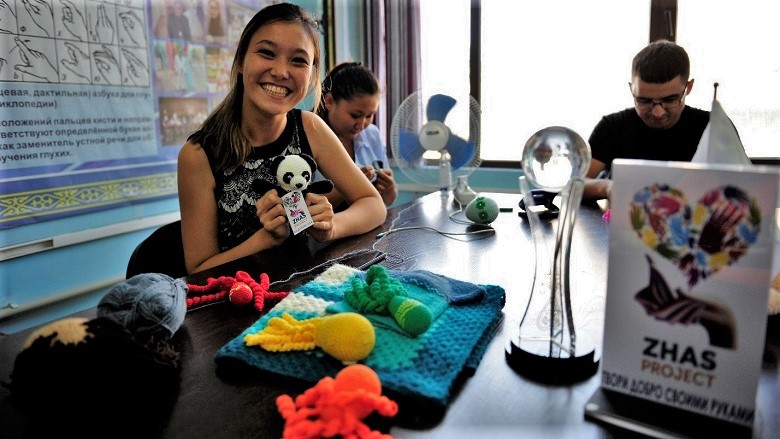ASTANA – Mangystau region youth have received up to one million tenge (US$2,664) in World Bank grants for social projects, said regional Youth Policy Department head Bauyrzhan Tuyakov during a press conference related to the 2019 Year of Youth in Kazakhstan organised by the Ministry of Information and Communication.
The Year of Youth was announced in accordance with President Nursultan Nazarbayev’s Nov. 13 decree. The region’s Zhas Project, organised by the Ministry of Education and Science and the World Bank, is one of 100 events dedicated to the celebration, reported inform.kz.
The project should help resolve issues surrounding employing young people and their involvement in the business environment. The venture will not be a profit-making one and the products produced will be delivered to the region’s orphanages, low-income families and vulnerable population.
The participants will attend a three-stage training programme to gain vital skills and project management, implementing their social projects within six months. The monthly stipend will be 60,000 tenge (US$159.82) for university graduates and 40,000 tenge (US$106.55) for all others. The project also offers mentorship for participants while their projects are executed.
In addition to the grants, young people can receive a special grant from the Mangystau region’s akim (governor) for higher education, said Tuyakov. Career counselling offices will be opened in all schools in the region and public hearings will be held every six months. A map showing specialties demanded in the labour market will be developed and distributed to educational institutions.
As a part of the Aktau Summit, the Friendship of Youth 2019 forum involving young people from neighbouring countries will be held this year, he added.
The Zhas Project, which last year covered the Aktobe, East Kazakhstan, Kostanai, Kyzylorda, North Kazakhstan and Zhambyl regions, is being executed from 2017-2020. Participants are chosen among young people age 14-29 (except for schoolchildren) living in the territory of the project areas. In 2017, the programme attracted approximately 2,000 youth; last year, the figure reached 3,500.
The host organisations, mentors and young applicants compete for their place in the project.



